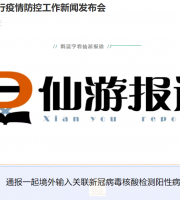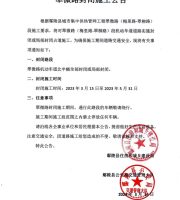The process and control points of prefabricated construction of findingmysecretgarden 1
.
Preparation: 1
.
The detailed design should be carried out in advance before the production of prefabricated components, and the detailed design documents should be prepared according to the construction drawing design documents, installation construction requirements and production technology; 2
.
The detailed design documents shall be submitted to the design unit for review, and can be used as the production basis only after obtaining the written approval of the design unit and stamping the “design confirmation” seal on the detailed design documents; 3
.
Completion time of detailed design: it shall be at least two months ahead of the component service time
.
4
.
The in-depth design of prefabricated components integrates the preconditions of water, electricity, civil engineering, fine decoration and other professional reservation and embedding
.
5
.
The in-depth design of prefabricated components and on-site construction methods complement each other to meet the operability of prefabricated component installation and professional construction; 6
.
The combination of in-depth drawings and on-site construction of prefabricated components means that the difficulty of component production should be balanced with that of on-site construction
.
2、 Focus on strengthening the quality control of the production of prefabricated components
.
The company selects professional supervision engineers with high professional level to be stationed on the site to control the raw materials of the production of prefabricated components (reinforcement, concrete raw materials, etc.)
.
At the same time, the whole process tracking supervision is carried out for each important link such as the processing and production of component reinforcement and concrete pouring and maintenance, and the construction documents such as the image and relevant side station records, witness sampling and quality inspection records are retained to ensure the traceability of each prefabricated component and ensure the quality of prefabricated components( 1) Elevation and axis control 1
.
The two ends of the laminated plate in the drawing design enter the wall for 1cm
.
If the axis control is not good (the length of the laminated plate entering the wall is different), the quality will be affected
.
For this reason, the supervision engineer requires that the general contractor special person in charge, axis process control, axis minimum error, supervision engineer process supervision
.
Before the installation of the laminated plate, after the general contractor’s self inspection is qualified, it is reported to the supervisor for acceptance before hoisting
.
2
.
Roof elevation control is another key point, because the laminated plate is a plane, when it is installed, it will be high somewhere and low somewhere, which will make the range of the roof too large and not meet the specification requirements( 2) Laminated plate hoisting 1
.
During the transportation and hoisting of laminated plate, the plate surface often cracks or even breaks
.
When processing the plate surface, warping, missing angle, broken angle, truss reinforcement exposed or embedded parts falling off often occur
.
The main reason is that the span of laminated plate is too large, cracks are generated due to the compression between plates during transportation or during hoisting, and the cracks extend to the whole plate, This will lead to the failure of components
.
2
.
In the process of flat transportation, the four corners are damaged
.
It is suggested that the corner protectors made of plastic or rubber materials should be made according to the thickness of the components
.
The corner protector can be protected in the component factory or put into the component during transportation
.
It can be removed before installation to achieve reuse and reduce the damage of the plate
.
In the process of transportation, the method of increasing the distance, a small number of times can be used
.
During transportation, the flat road can be selected and the times of transportation can be increased to ensure that the flat plate will not be broken
.
3
.
In the process of hoisting, the laminated plate is often broken due to too large span
.
In order to solve this problem, we should communicate with the design unit in advance
.
It is suggested that the design unit should fully consider this problem when designing components, and try to control the span of the laminated plate within the deflection range of the plate, so as to reduce the damage of the laminated plate in the process of hoisting on site
.
4
.
The embedded parts often fall off in the hoisting of laminated plate, which is also a problem often encountered in the site
.
It is suggested that the reinforcement around the embedded parts or the truss reinforcement of laminated plate can be directly hoisted, which can save the hoisting embedded parts, ensure the hoisting safety of laminated plate, and change the position of hoisting point according to the site conditions( 3) Stair hoisting 1
.
The professional hoisting tools provided by the manufacturer should be used when hoisting the stairs, which can not be made on site, and the strength of the hoisting tools made on site can not meet the requirements
.
2
.
Before lifting the stairs, check whether the specification and position of the embedded bolts are consistent with the drawing, and whether the elevation of the lifting platform is consistent with the drawing design
.
3
.
As the stairs are long and heavy, a piece of stairs is divided into two parts in the design
.
During the hoisting, attention should be paid to the correct hoisting sequence of the two stairs, and the joint should be tight
.
When the joint is too large, the acceptance will not be passed and the stairs should be hoisted again
.
4
.
Stairs are easy to be damaged in the process of hoisting and within the time of hoisting completion, and the surface is lack of edges and corners
.
Therefore, it is necessary to protect the finished products to ensure the quality of stairs( 4) Wall reinforcement displacement 1
.
The reason is that the vertical reinforcement of the shear wall or column collided during the hoisting process of the composite plate, resulting in deviation, and the reinforcement was not reset in time
.
After the hoisting, the reinforcement was stuck in the position of the composite plate and could not be reset due to the existence of the reinforcement in the wall column position
.
Supervision measures: in the process of hoisting, the reinforcement team or hoisting team shall send special personnel to follow
.
In case of collision leading to the deviation of wall column reinforcement, it shall be reset immediately, and the quality awareness of hoisting team shall be strengthened to reduce collision( 5) Cracks between precast slab and cast-in-place slab (5) cracks between precast slab and cast-in-place slab 1
.
After the production of composite slab is completed, the stacking time in the field is long, and there will be floating dust and debris on the surface
.
If it is not cleaned up in time, it will cause more mud in the concrete, the bonding between cast-in-place layer and composite slab is not firm, and cracks will appear on the surface of cast-in-place layer
.
2
.
The composite board has poor water retention and strong water absorption
.
When pouring concrete, if the composite board is in a dry state, it will cause the composite board to absorb the water in the concrete, resulting in shrinkage cracks on the concrete surface
.
Supervision measures: before binding reinforcement, the sundries on the laminated plate shall be cleaned up
.
Before pouring concrete, the water pipe shall be used to wash and moisten, the floating ash on the surface concentrated in the indentation shall be cleaned, and the laminated plate shall be kept in a moist state
.
The concrete shall be vibrated and compacted, and the surface shall be smooth
.
After the concrete is finished, the membrane shall be used to cover it, and the watering maintenance shall be timely
.
1
.
The construction industry has its own unique one-time characteristics
.
In the construction, the quality of materials is the most important
.
Therefore, it is necessary to establish a strict on-site supervision management system to fundamentally control the production quality of components
.
2
.
All factory components and accessories shall be accompanied with product quality certification documents, which shall be signed and sealed completely
.
On site supervisors only need to check the component itself and the quality certification documents of on-board products, and all construction data in component production shall be collected, sorted and retained by on-site supervisors
.
3
.
When the components and parts enter the site, the construction, design, supervision, construction and component manufacturers shall jointly check and accept the specifications, dimensions, reserved and embedded quality of the components and parts
.
After passing the inspection, the acceptance record of the first part shall be formed and signed by the relevant personnel of the relevant units for confirmation and retention
.
The follow-up components and fittings can be accepted only after the construction, supervision and components and fittings manufacturers are present at the same time and jointly confirmed
.
welcome
.


